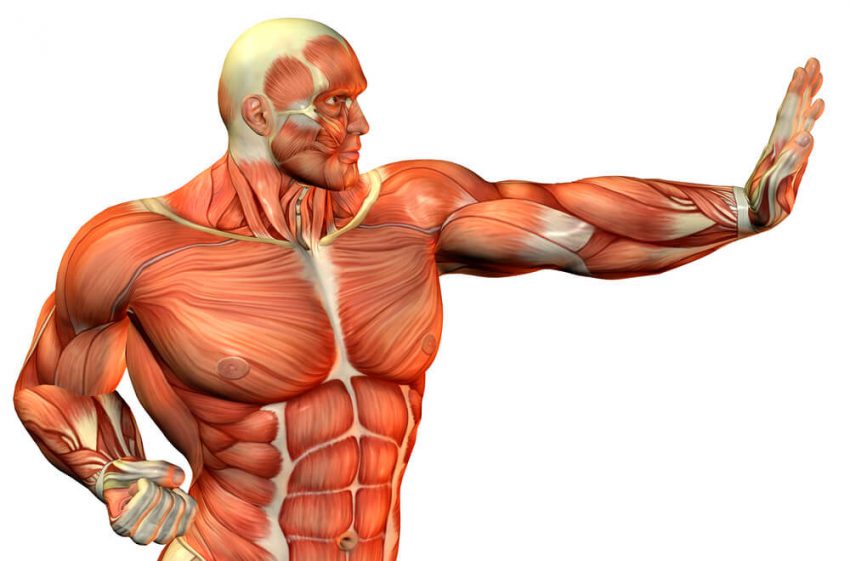
A person has oxidative ( slow ) and glycolytic ( fast ) muscle fibers. The former have a red color, which is due to the high content of oxygen molecules in them. The latter are white, since they use anaerobic glycolysis as the main energy resource, with the participation of creatine phosphate. How important is this information for the fitness enthusiast? It can help you overcome plateaus in strength sports and achieve more muscle hypertrophy if the goal is body aesthetics.
Fast muscle fibers and their role
Glycolytic muscle fibers are designed to do the job with great power, but short duration. For example, when pushing a barbell, or running 50 meters, we train them mainly. They use “carbohydrate” fuel, that is, they feed on the glycolysis process. The predominance of white muscle fibers means that a person is naturally prone to strength training with low repetitions and significant weights. He can do more work per unit of time, if “more” is a significant weight on the bar, and not the number of repetitions.
Fast muscle fibers are often not prone to hypertrophy (large volume), but rather stiff. People with their predominance may not be endowed with large muscle mass initially. But they are just one of those who press their weight in their first workout, and everyone around them is surprised how this is happening, since they do not see impressive muscle hypertrophy.
Slow muscle fibers and their role
Now imagine that we are doing the same barbell push, but for a large number of repetitions, as CrossFit athletes do. Fast muscle fibers in about 30 seconds depleted the resources of glycogen and creatine phosphate and got tired. And we need to keep moving. Then the so-called slow muscle fibers are recruited. They run on “aerobic” fuel and can perform many contractions. People with their predominance will have a predisposition to crossfit, bodybuilding pump training and … all sports that require endurance, but not explosive strength.
It is often said that slow muscle fibers are useless in terms of building a beautiful figure, but this not this way. You can achieve their hypertrophy with the help of competent and regular training.

Which fibers are more, and whether it matters during training
The predisposition to certain sports depends on anthropometry (bone structure, length limbs, the ratio of angles in basic exercises), body composition (predisposition to gaining fat mass), hormonal levels, and the predominance of certain muscle fibers. But a significant role is played by the way the person’s central nervous system processes loads, and what exactly he wants to do.
If we are talking about amateur fitness, when the goal of training is beauty and health, and not medals and cups serious competition, knowledge of the prevailing type of muscle fibers can build a training program so as to achieve results faster.
For people with a predisposition to multi-repetitive work, “bodybuilding” workouts for 8-12 repetitions in the basic have been created, and 15-20 reps in isolation exercises. Such fitnessists tolerate cardio load well, which means they will be able to successfully fight excess body fat.
If there is a predisposition to strength training in a low-rep mode, mastering the base will be ideal, and, for a beginner, work in the range of 5-6 repetitions, and for continuing ones – in a smaller number of repetitions too. Adding relatively multi-repetitions of work is still necessary to achieve a more balanced development, but the basis can be built on training borrowed from the arsenal of powerlifting.
In either case, it makes no sense to dwell on any one style of training , it is better to use a yearly cycle in which the load will periodically change its volume and intensity.
Most people have approximately the same number of muscle fibers, therefore combined training or cycling is suitable for them. Try to build your training harmoniously, combine different elements in it, and you will definitely achieve your goal, whatever it may be.
